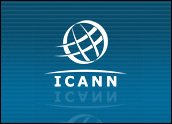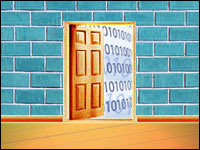
Today it’s the direct form that rules, the manufacturer’s product going straight to the lap of the end user. No matter if the end user is a teenager, a roofer or a big business, a single-item purchase is sufficient.
No more demands to buy large inventories. No middle layers, no costly structures, no bureaucracies and no extra hoards of people or any unnecessary tapes. The supply chain is fast, quick and cheap — it just takes one call and one quick delivery.
It’s like getting a pizza delivered to your home any time or all the time. All you need is online access to the factory, and voila! The goods are at your doorstep.
Anything and Everything
Welcome to the manufacturer to end user business model! From ultra-complicated, highly polished and highly engineered modular devices to soft baby carriages, custom-labeled wines, engraved books, custom-designed furniture and tailored apparel. Is there anything left? Even steamy fertilizers and bulky chicken feed find their way into the chain!
Like a series of conveyer belts zipping along the latitude and the longitude lines, our society is strung together via an international supply chain, linking globally scattered manufacturers of objects delivering directly to globally scattered herds of end-users — one end user at a time.
Airlines and hotels went direct and proved to be very successful with this approach, while snatching millions of expensive desks from the travel agents. Now there are thousands of other products and services covering a full spectrum within every industry sector doing the same thing.
These online conveyer belts of goods are also being serviced by call centers conveniently located in tropically warm regions with the cheapest labor costs. This system of moving products direct from the manufacturer to the end user is also very successful in the business sector, as they are eliminating distributors, agents and wholesalers. Everyone wants direct access, and it’s available to anyone and everyone, ’round the clock.
The wealth is also being shifted to the fabricators and the manufacturers; they now have the power of e-commerce to divert the transactional flow directly to them and block it from the old-fashioned infrastructures of wholesalers and retailers. The basic contract manufacturer has spread its wings over marketing and branding and now wants to play the cyber-branding games, building global name brands and corporate name identities. The middle layer is being crushed while countries with cheap labor manufacturing are seeing the boom.
The U.S. and the Western economies, meanwhile, are all heavily dependent on intermediate services, and thus are trying to cope with the new pressures. Primarily service-based economies that thrived by offering sophisticated sales marketing and channel distribution are getting left behind as a very large number of high tech and rich content-producing countries have emerged. A small e-commerce-driven economy can easily shake up a sluggish giant country tangled in old economy models.
It’s this magic of e-commerce that now allows a direct to end user delivery that has become a boom for the logistical and door-to-door courier corporations around the globe. All those middle layers created over the past century, along with the emerging needs of the then-naive consumer, have disappeared.
Across the Divide
Once upon a time, consumers were scared of or oblivious to the shiny things behind the old muddy and slushy factories, and this ugly side of manufacturing kept them away. It didn’t hurt that they were offered white glove service skating on marble floors, and everything on a silver plate. Now manufacturers are projecting ultra-friendly and ultra-customer-service-driven images, all supported by modern plants, while the Web has helped them to cross the bridge of the fears of smoke and dust, like an open kitchen concept in expensive restaurants, where black-tie consumers are extremely comfortable with the rattle, shouting, sizzle and all the smoke. Party time.
Anything can be shipped from one corner of the world to the other without any logistical problems, thanks to the major overnight services and great courier and delivery companies in the world. End users now have many successful experiences. They have become open to further expanding their overall purchases and aiming for more and more M-to-E models.
Economies that ignored the manufacturing base and adopted an overly-aggressive service model will feel this pinch in a big way, while others with a manufacturing base will have to maintain their price and quality or lose their edge.
This is now the age of manufacturers and their personal and direct link to individual customers. This is now the age of elimination and the unnecessary middle layers. This is now the age of the consumer.
Naseem Javed, author of Naming for Power and also Domain Wars, is recognized as a world authority on global nameidentities and domain issues. Javed founded ABC Namebank, a consultancy he established a quarter century ago, and conducts executive workshops on image and name identity issues. Contact him at [email protected].













































Social Media
See all Social Media